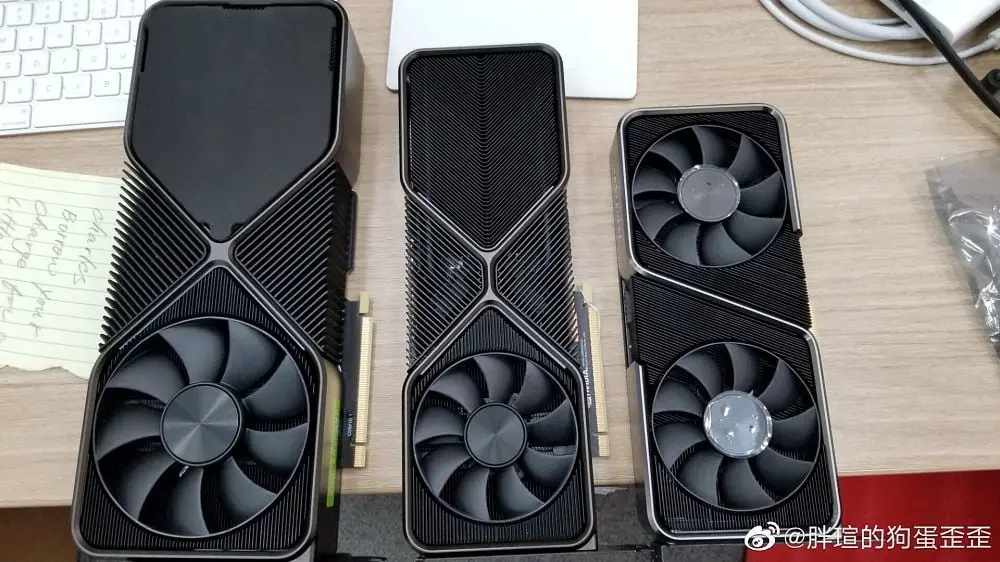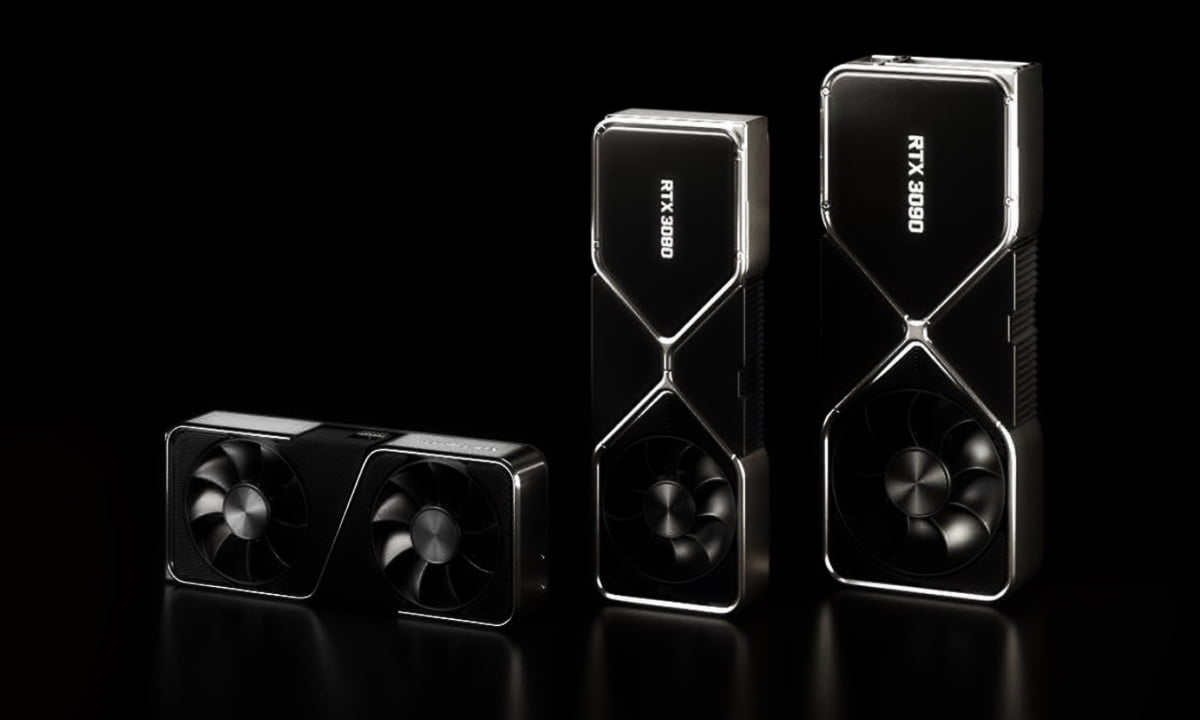An image leak from China has allowed us to directly compare the size and design of the Nvidia GeForce RTX 3090, RTX 3080 and RTX 3070.
Take a look at the RTX 3090, it’s huge, and it’s obvious that it’s going to hold three expansion slots. For its part, the RTX 3080 has a more contained size and everything seems to indicate that it will only occupy two expansion slots. Finally we have the RTX 3070, which is the smallest and most compact of the three, although it will also occupy two expansion slots.
As many of our readers will know, size matters a lot when it comes to graphics cards for three main reasons:
- Determine the space that we will need in our chassis. Nobody likes the idea of buying a graphics card and finding out that you don’t have enough space to mount it, or that you have to juggle the cooling system to make room for it.
- It is also related to the quality of the cooling system that it integrates. It is not an absolute maxim, that is, there are exceptions, but normally a larger graphics card can mount a more powerful cooling system.
- Finally, there is the issue of expansion slots that leaves us blocked. Keep in mind that although we find a graphics card that occupies two slots, it is possible that the width of its cooling system reaches a third slot.

- AMD confirms Radeon RX 6000 series through Fortnite
- GeForce RTX 30: Everything you need to know
- GeForce RTX 3080 beats RTX 2080 Ti in DOOM Eternal
We are going to need a wide chassis to mount an RTX 3090
Obviously, the format reminds us GIGABYTE GeForce RTX 2080 Super OC a lot, a model that has a huge cooling system and also occupies three expansion slots. However, the RTX 3090 is even bigger.
In contrast, the RTX 3080 has a more reasonable scale, and the RTX 3070 should fit in with most chassises, it is more compact. Before finishing I leave you the complete specifications of these graphics cards, as well as their measurements so that you are clear if you can mount them on your PC or not.
Nvidia GeForce RTX 3090 specs
- GA102 graphic core at 8 nm
- 10,496 shaders at 1395MHz – 1695MHz.
- 328 texturing units.
- 96 raster units.
- 328 tensor cores.
- 82 RT cores.
- 35.8 TFLOPs of power in FP32.
- 24GB GDDR6X at 19.5 GHz.
- 384 bit bus.
- 350 watt TDP.
- Requires a 12-pin connector and a 750-watt power supply.
- Measurements: 31.3 cm x 13.8 cm. It occupies three expansion slots.
Nvidia GeForce RTX 3080 specs
- GA102 graphic core at 8 nm
- 8,704 shaders at 1440MHz-1,710MHz.
- 272 texturing units.
- 88 raster units.
- 272 tensor cores.
- 68 RT cores.
- 29.7 TFLOPs of power in FP32.
- 10GB GDDR6X at 19GHz.
- 320-bit bus.
- 320 watt TDP.
- Requires a 12-pin connector and a 700-watt power supply.
- Measurements: 28.5 cm x 11.2 cm. It occupies two expansion slots.
Nvidia GeForce RTX 3070 specs
- Graphic core GA104 at 8 nm
- 5,888 shaders at 1500 MHz-1725 MHz.
- 184 texturing units.
- 64 raster units.
- 184 tensor cores.
- 46 nuclei RT.
- 19.9 TFLOPs of power in FP32.
- 8GB GDDR6 at 14GHz.
- 256-bit bus.
- 220 watt TDP.
- Requires a 12-pin connector and a 600-watt power supply.
- Measurements: 24.2 cm x 11.2 cm. It occupies three expansion slots.





